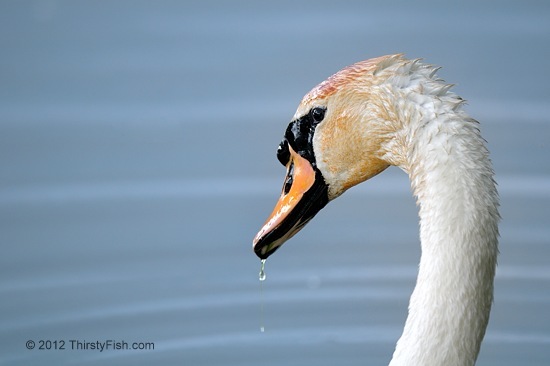Mute Swan / Purity vs Idealization

Compare this one with another Mute Swan portrait that I had posted earlier. You will immediately recognize that this one looks less pure because of the yellowing on its head. Most photographers will either not post this picture, or use photo editing software to "correct" the impurity before they post it. Photographers justify their selection by claiming that they are in search of the most representative sample of whatever it is that they are photographing. But they are not truthful!
Most of the photographs you see, far from being the most representative sample, are actually the idealized versions of the photographed subject, usually to the taste of the photographer. Many photographs are manipulated; saturation and contrast are increased or decreased to reflect a certain mood, defects are cleaned up, and, impurities are hidden from the eyes. For portraits this may be acceptable, but for wildlife photographs this can be deceptive. Of course, some might argue that manipulated wildlife photos are "fine art", and they can be, but I do not think that they could really be called wildlife photographs.
On the other end, there are purists like Henri Cartier-Bresson who will not even allow their photographs to be cropped. Of course, ultimately, any camera, sensor or film also alters reality. Purity, the absence of impurity or contaminants in a subject, is often confused with idealization, how we wish the subject to look like. I have observed and photographed many hundreds of Mute Swans, and a good majority of them have some degree of yellowing on their heads. IMHO, some genres of photography should not be idealized, although they could be purified.
Song of the Day: Smooth - Santana Featuring Rob Thomas (1999)
Posted
- Sat 2012-05-12
Captured
- 2012-05-06
- Philadelphia, PA


